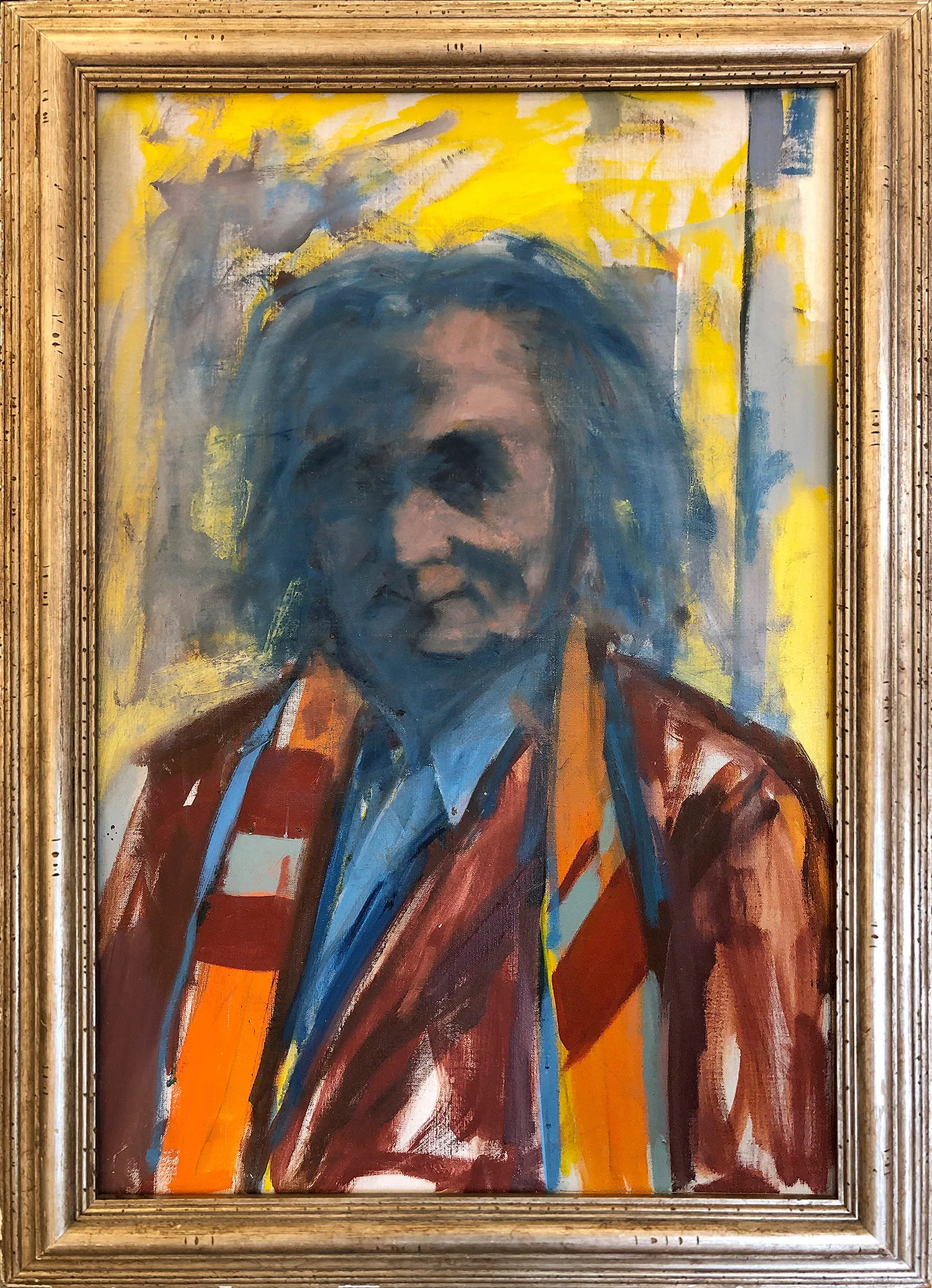Elaine de Kooning
Elaine de Kooning was an accomplished landscape and portrait artist active in the Abstract Expressionism movement of the early 20th century. She was a member of the Eighth Street Club (the Club) in New York City. The Club’s members were part of the abstract expressionist movement, and the Club functioned as a space to discuss ideas. A membership position for a woman was rare at this time. Women were often marginalized in the Abstract Expressionist movement, functioning as objects and accessories to confirm the masculinity of their male counterparts. On December 9, 1943, she married Dutch action painter Willem de Kooning, whose career eventually eclipsed hers.
Elaine de Kooning was a part of the abstract expressionist movement. She chose to sign her artworks with her initials rather than her full name, to avoid her paintings being labeled as feminine in a traditionally masculine movement. She made both abstract and figurative paintings and drawings. Her earlier work comprised watercolors and still lifes, including 50 watercolor sketches inspired by a statue in the Luxembourg Gardens in Paris. Later in her career, her work fused abstraction with mythology, primitive imagery, and realism. Her gestural style of portraiture is often noted, although her work was mostly figurative and representational, and rarely purely abstract. She produced a diverse body of work over the course of her lifetime, including sculpture, etchings, and work inspired by cave drawings, all in addition to her many paintings. Late in life, she produced a series of paintings inspired by the paleolithic cave paintings of Lascaux in France and Altamira in Spain; these were shown at the Fischbach Gallery in November 1988. She died three months later from complications of lung cancer.





